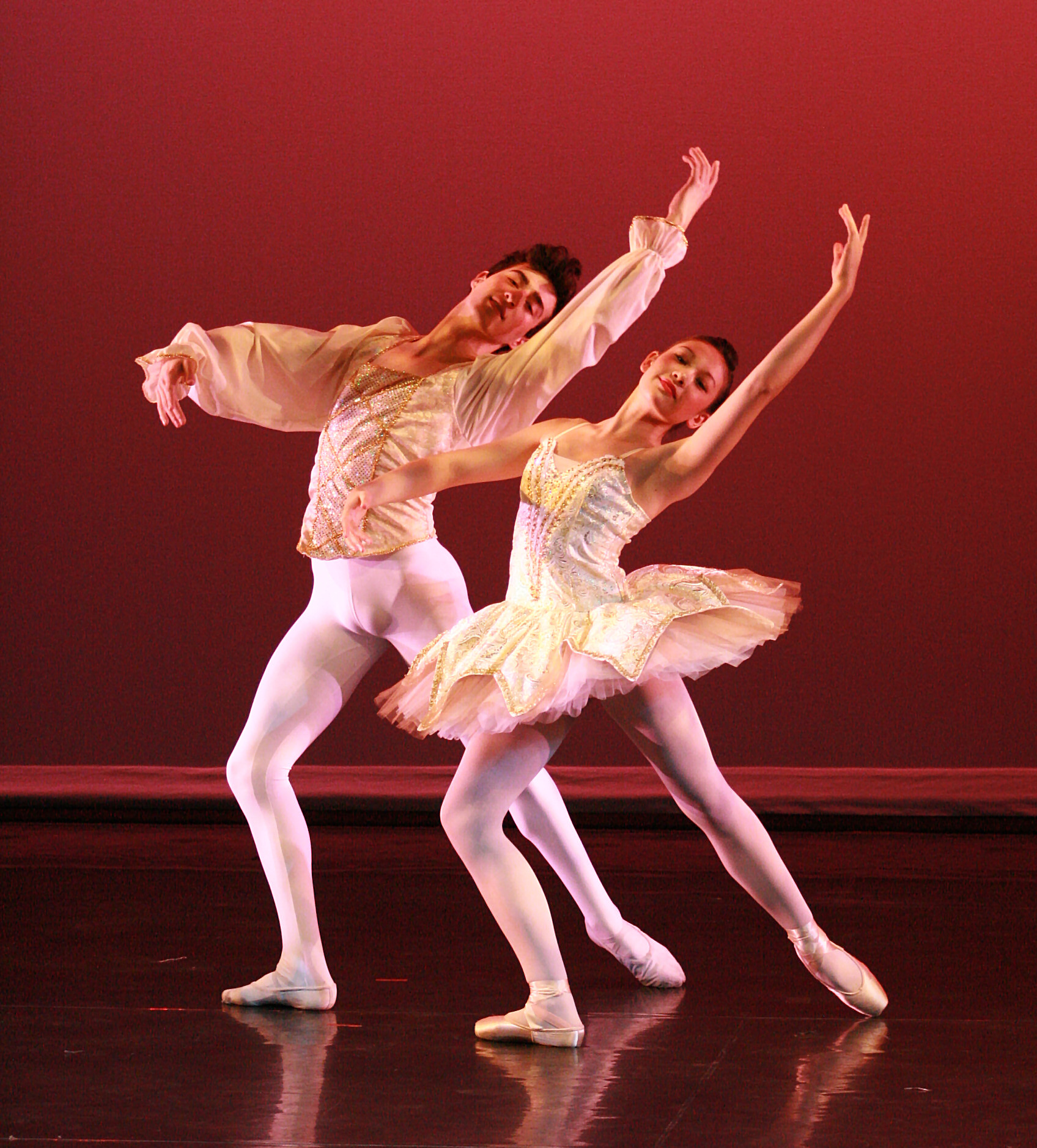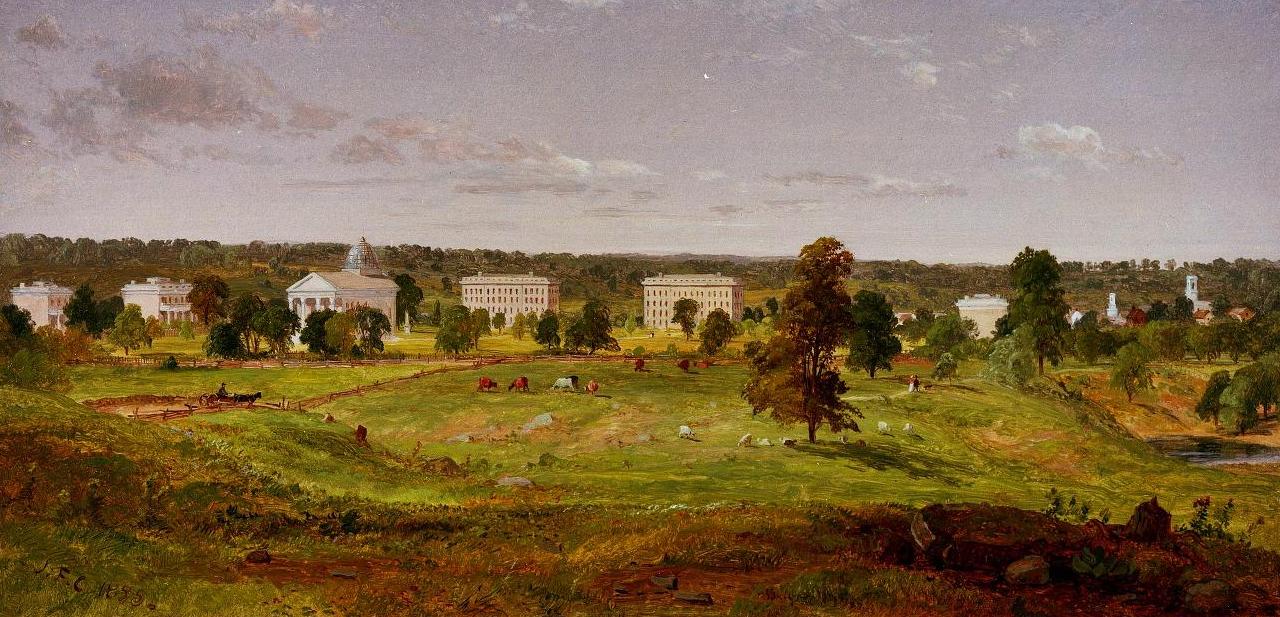|
Hoctor's Ballet
''Hoctor's Ballet'' is a composition by George Gershwin for full orchestra written in 1937, originally from the score for ''Shall We Dance''. Performance time runs about 10 minutes. Composed by Gershwin specifically for the ballerina Harriet Hoctor, the piece features string glissandos, rapid shifts in key, and the most extensive parts are written for the harp. It consists of a dramatic introduction followed by a fast waltz, a stately procession, an extended pas de deux, and a climactic reprise (also noted in some books as a separate "Shall We Dance", "Masks" or "Finale and Coda" scene.) This is the only published music from the ''Shall We Dance'' score available besides the '' Walking the Dog'' sequence, and is significant as the last long composition written by Gershwin for the symphony orchestra. The premiere live concert performance of ''Hoctor's Ballet'' took place on July 28, 2007 at the Severance Hall Pavilion in Cleveland, Ohio, with Loras John Schissel conducting the ... [...More Info...] [...Related Items...] OR: [Wikipedia] [Google] [Baidu] |
George Gershwin
George Gershwin (; born Jacob Gershwine; September 26, 1898 – July 11, 1937) was an American composer and pianist whose compositions spanned popular, jazz and classical genres. Among his best-known works are the orchestral compositions ''Rhapsody in Blue'' (1924) and ''An American in Paris'' (1928), the songs "Swanee (song), Swanee" (1919) and "Fascinating Rhythm" (1924), the jazz standards "Embraceable You" (1928) and "I Got Rhythm" (1930), and the opera ''Porgy and Bess'' (1935), which included the hit "Summertime (George Gershwin song), Summertime". Gershwin studied piano under Charles Hambitzer and composition with Rubin Goldmark, Henry Cowell, and Joseph Brody (composer), Joseph Brody. He began his career as a song plugger but soon started composing Broadway theater works with his brother Ira Gershwin and with Buddy DeSylva. He moved to Paris, intending to study with Nadia Boulanger, but she refused him, afraid that rigorous classical study would ruin his jazz-influe ... [...More Info...] [...Related Items...] OR: [Wikipedia] [Google] [Baidu] |
Shall We Dance (1937 Film)
''Shall We Dance'', released in 1937, is the seventh of the ten Fred Astaire-Ginger Rogers musical comedy films. The story follows an American ballet dancer (Astaire) who falls in love with a tap dancer (Rogers); the tabloid press concocts a story of their marriage, after which life imitates art. George Gershwin wrote the symphonic underscore and Ira Gershwin the lyrics, for their second Hollywood musical. Plot Peter P. Peters (Fred Astaire) is an amiable American ballet dancer billed as "Petrov", who cultivates a public image of being a serious, demanding and temperamental Russian, though his employer knows the truth. Peters dances for a ballet company in Paris owned by the bumbling Jeffrey Baird (Edward Everett Horton), and secretly never wants to blend classical ballet with modern jazz dancing because they think it does not look very professional. When Peters sees a photo of famous tap dancer Linda Keene (Ginger Rogers), he falls in love with her. He contrives to meet her (a ... [...More Info...] [...Related Items...] OR: [Wikipedia] [Google] [Baidu] |
Harriet Hoctor
Harriet Hoctor (September 25, 1905 – June 9, 1977) was a ballerina, dancer, actress and instructor. Composer George Gershwin composed a symphonic orchestral piece (Hoctor's Ballet) specifically for Hoctor in the film ''Shall We Dance'' (1937). Biography Harriet Hoctor was born in Hoosick Falls, New York, to Timothy Hoctor and Elizabeth Kearny Hoctor. She was one of four children, the others being Martin Francis ("Frank"), John, and Eloise. Harriet Hoctor never married. Early training Hoctor's maternal aunt, Annie Kearney, was a social secretary to a wealthy woman in Hoosick Falls who took an interest in young Harriet. At the age of twelve she was sent to New York City and placed under the tutelage of Russian ballet master Louis Harvy Chalif of the Normal School of Dancing. Stage By the time she was sixteen, Hoctor was touring in vaudeville on the same bill as the Duncan Sisters. She was asked to join their act and became a key player in their Topsy and Eva show present ... [...More Info...] [...Related Items...] OR: [Wikipedia] [Google] [Baidu] |
Glissando
In music, a glissando (; plural: ''glissandi'', abbreviated ''gliss.'') is a glide from one pitch to another (). It is an Italianized musical term derived from the French ''glisser'', "to glide". In some contexts, it is distinguished from the continuous portamento. Some colloquial equivalents are slide, sweep (referring to the "discrete glissando" effects on guitar and harp, respectively), bend, smear, rip (for a loud, violent gliss to the beginning of a note), lip (in jazz terminology, when executed by changing one's embouchure on a wind instrument), plop, or falling hail (a glissando on a harp using the back of the fingernails). On wind instruments, a scoop is a glissando ascending to the onset of a note achieved entirely with the embouchure. Portamento Prescriptive attempts to distinguish the glissando from the portamento by limiting the former to the filling in of discrete intermediate pitches on instruments like the piano, harp, and fretted stringed instruments have r ... [...More Info...] [...Related Items...] OR: [Wikipedia] [Google] [Baidu] |
Pas De Deux
In ballet, a pas de deux ( French, literally "step of two") is a dance duet in which two dancers, typically a male and a female, perform ballet steps together. The pas de deux is characteristic of classical ballet and can be found in many well-known ballets, including ''Sleeping Beauty'', ''Swan Lake'', and ''Giselle''. It is most often performed by a male and a female (a ''danseur'' and a ''ballerina'') though there are exceptions, such as in the film ''White Nights'', in which a pas de deux is performed by Mikhail Baryshnikov and Gregory Hines. Grand pas de deux A grand pas de deux is a structured pas de deux that typically has five parts, consisting of an ''entrée'' (introduction), an ''adagio'', two variations (a solo for each dancer), and a ''coda'' (conclusion). It is effectively a suite of dances that share a common theme, often symbolic of a love story or the partnership inherent in love, with the dancers portraying expressions of affectionate feelings and thoughts be ... [...More Info...] [...Related Items...] OR: [Wikipedia] [Google] [Baidu] |
Walking The Dog (Gershwin)
''Walking the Dog'' is one of many musical numbers written in 1937 by George Gershwin for the Fred Astaire – Ginger Rogers film score for '' Shall We Dance''. In the film, the music accompanies a sequence of walking a dog on board a luxury liner. In 1960, the sequence was published as "Promenade". Most of the score from the film (composed and orchestrated by Gershwin) remains unpublished and unavailable in modern stereo recordings. On September 22, 2013, it was announced that a musicological critical edition of the full orchestral score would be released, as a result of collaboration between the Gershwin family, the Library of Congress and the University of Michigan. The entire Gershwin project may take 30 to 40 years to complete, and it is unknown when the score to ''Shall We Dance'' (which includes ''Walking The Dog'') will be released. It is unknown whether the critical edition will include the round section heard on the soundtrack. See also *List of composition ... [...More Info...] [...Related Items...] OR: [Wikipedia] [Google] [Baidu] |
Severance Hall
Severance Hall is a concert hall located in the University Circle section of Cleveland, Ohio. Opened in 1931, Severance Hall was named after patrons John L. Severance and his wife, Elisabeth Huntingdon DeWitt Severance, and serves as the home of The Cleveland Orchestra. It is currently listed on the National Register of Historic Places as part of Cleveland’s Wade Park District. History The Cleveland Orchestra first performed at Grays Armory in downtown Cleveland and later moved to the Masonic Auditorium for concerts during the 1920s. But both buildings also hosted other types of events that occasionally created scheduling conflicts for the Orchestra, including, most famously, twice when the ensemble had to find a location other than Grays Armory because of a poultry exhibition. The Orchestra’s administration soon came to realize the advantages that having a permanent concert hall would bring to the ensemble's performances, rehearsals, and radio broadcasts. After encoura ... [...More Info...] [...Related Items...] OR: [Wikipedia] [Google] [Baidu] |
Blossom Festival
The Blossom Festival is a summer music festival of orchestral music located at the Blossom Music Center in Cuyahoga Falls, Ohio. The festival was originally created to provide a summer concert vehicle for the Cleveland Orchestra and the Blossom Music Center was specifically built to host the festival. The festival's first season was in 1968 and it consisted of six weeks of concerts given by the Cleveland Orchestra intermingled with eight individual jazz/ folk music concerts. George Szell conducted the first concert on July 19, 1968. Since then the festival has been expanded to include ten weeks of orchestral music, most of which is still performed by the Cleveland Orchestra but also includes concerts by the festival's own Blossom Festival Orchestra. The Blossom Festival Orchestra is made up of free-lance musicians from the Cleveland area, mostly pulling from musicians of the Cleveland Pops Orchestra, Opera Cleveland Orchestra, or Apollo's Fire. The orchestra performs annually ... [...More Info...] [...Related Items...] OR: [Wikipedia] [Google] [Baidu] |
Library Of Congress
The Library of Congress (LOC) is the research library that officially serves the United States Congress and is the ''de facto'' national library of the United States. It is the oldest federal cultural institution in the country. The library is housed in three buildings on Capitol Hill in Washington, D.C.; it also maintains a conservation center in Culpeper, Virginia. The library's functions are overseen by the Librarian of Congress, and its buildings are maintained by the Architect of the Capitol. The Library of Congress is one of the largest libraries in the world. Its "collections are universal, not limited by subject, format, or national boundary, and include research materials from all parts of the world and in more than 470 languages." Congress moved to Washington, D.C., in 1800 after holding sessions for eleven years in the temporary national capitals in New York City and Philadelphia. In both cities, members of the U.S. Congress had access to the sizable colle ... [...More Info...] [...Related Items...] OR: [Wikipedia] [Google] [Baidu] |
University Of Michigan
, mottoeng = "Arts, Knowledge, Truth" , former_names = Catholepistemiad, or University of Michigania (1817–1821) , budget = $10.3 billion (2021) , endowment = $17 billion (2021)As of October 25, 2021. , president = Santa Ono , provost = Laurie McCauley , established = , type = Public research university , academic_affiliations = , students = 48,090 (2021) , undergrad = 31,329 (2021) , postgrad = 16,578 (2021) , administrative_staff = 18,986 (2014) , faculty = 6,771 (2014) , city = Ann Arbor , state = Michigan , country = United States , coor = , campus = Midsize City, Total: , including arboretum , colors = Maize & Blue , nickname = Wolverines , sp ... [...More Info...] [...Related Items...] OR: [Wikipedia] [Google] [Baidu] |
Compositions By George Gershwin
Composition or Compositions may refer to: Arts and literature * Composition (dance), practice and teaching of choreography *Composition (language), in literature and rhetoric, producing a work in spoken tradition and written discourse, to include visuals and digital space * Composition (music), an original piece of music and its creation *Composition (visual arts), the plan, placement or arrangement of the elements of art in a work * ''Composition'' (Peeters), a 1921 painting by Jozef Peeters *Composition studies, the professional field of writing instruction * ''Compositions'' (album), an album by Anita Baker *Digital compositing, the practice of digitally piecing together a video Computer science *Function composition (computer science), an act or mechanism to combine simple functions to build more complicated ones *Object composition, combining simpler data types into more complex data types, or function calls into calling functions History * Composition of 1867, Austro-Hungari ... [...More Info...] [...Related Items...] OR: [Wikipedia] [Google] [Baidu] |




